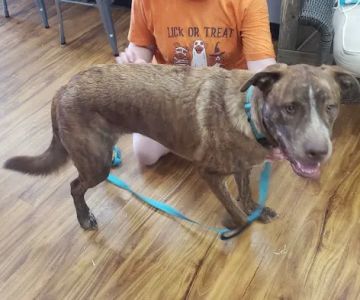How to Train Your Dog to Stop Chewing Furniture
- Understanding Chewing Behavior
- Identifying the Causes of Chewing
- Effective Training Techniques
- The Power of Positive Reinforcement
- Providing Alternatives: Toys and Distractions
- When to Seek Professional Help
1. Understanding Chewing Behavior
Chewing is a natural behavior for dogs, and it serves many important functions, especially for puppies. However, it can become problematic if your dog chews on furniture or other household items. To address this behavior, it's crucial to first understand why your dog is chewing. Often, chewing is linked to the need for stimulation, teething, boredom, or anxiety.
For puppies, chewing is an essential part of their development. As they grow, their teeth come in, and chewing helps alleviate the discomfort they feel. Adult dogs, however, may chew as a way to express anxiety or relieve boredom. Understanding the cause of the behavior will guide you in choosing the right approach for training your dog to stop chewing on furniture.
2. Identifying the Causes of Chewing
Before you can train your dog to stop chewing furniture, it’s important to identify the underlying cause. Here are some common reasons why dogs chew:
- Teething: Puppies, in particular, will chew to alleviate the discomfort of growing teeth. Teething typically happens around 3-6 months of age and can lead to a strong desire to chew.
- Boredom: Dogs are intelligent creatures that need mental stimulation. If they don’t have enough activities to keep them engaged, they may resort to chewing on furniture or shoes to pass the time.
- Anxiety: Separation anxiety or stress can cause dogs to chew destructively. This behavior may be a way for your dog to cope with feelings of insecurity or fear when left alone.
- Excess Energy: If your dog doesn’t get enough physical exercise, they may chew furniture as a way to release pent-up energy. Dogs with more active lifestyles may chew to burn off extra energy.
Once you identify the cause of the chewing, it will be easier to determine how to approach the problem. For example, if your dog is chewing because of anxiety, you might need to provide a calming environment or introduce behavior modification techniques. If boredom is the issue, increasing playtime and mental stimulation might be the solution.

1946 S Christopher Columbus Blvd, Philadelphia, PA 19148, USA
See Details3. Effective Training Techniques
Training your dog to stop chewing furniture involves consistency, patience, and the use of the right techniques. Here are some effective strategies:
- Redirecting Chewing: When you catch your dog in the act of chewing furniture, immediately redirect them to a chew toy or bone. Over time, they will learn that chewing on the furniture is not acceptable, but chewing on their toys is.
- Use of Deterrents: Some sprays are available that make furniture and other objects taste unpleasant to dogs. Spraying these items can deter your dog from chewing on them.
- Crate Training: Crate training can be helpful when you are away from home. It provides a safe space for your dog where they cannot chew on furniture, preventing destructive behavior when unsupervised.
- Consistency: Consistency is key to training success. Always respond the same way when your dog chews furniture, and ensure all members of your household do the same.
Training your dog requires patience and persistence, but with consistency, your dog will eventually learn which behaviors are appropriate and which ones are not.
4. The Power of Positive Reinforcement
Positive reinforcement is one of the most effective methods for training your dog. Instead of focusing on punishing undesirable behavior, you should reward good behavior. When your dog chews on their toys rather than the furniture, offer them praise and treats. This reinforces the idea that chewing toys leads to positive outcomes.
Another form of positive reinforcement is using a clicker. Every time your dog chooses a toy over the furniture, click and treat them immediately. This creates an association between the positive behavior (chewing on toys) and the reward. Over time, this helps your dog associate positive behaviors with rewards, while discouraging the unwanted chewing of furniture.
5. Providing Alternatives: Toys and Distractions
To keep your dog engaged and prevent furniture destruction, provide them with a variety of chew toys. Choose toys that are specifically designed for chewing, as they are more durable and safer for your dog. Some popular chew toys include rubber toys, nylon bones, and treat-dispensing toys.
Interactive toys that engage your dog’s mind can also help curb destructive chewing. Puzzle toys that release treats as your dog solves them can keep them occupied for hours, providing mental stimulation and satisfying their natural chewing instincts. Providing a variety of toys ensures that your dog always has something to focus on, reducing the likelihood of chewing on furniture.
6. When to Seek Professional Help
While many cases of destructive chewing can be managed with proper training, some dogs may require additional help. If your dog’s chewing is excessive or linked to separation anxiety, it may be time to seek professional help from a veterinarian or a certified dog trainer.
A veterinarian can help rule out medical issues, such as dental pain or nutritional deficiencies, which might contribute to your dog’s chewing behavior. A professional trainer can also provide personalized advice and techniques to address specific behavioral problems, especially if your dog’s chewing persists despite your efforts to intervene.
With the right guidance and training, most dogs can learn to stop chewing on furniture and focus their energy on more appropriate activities.










